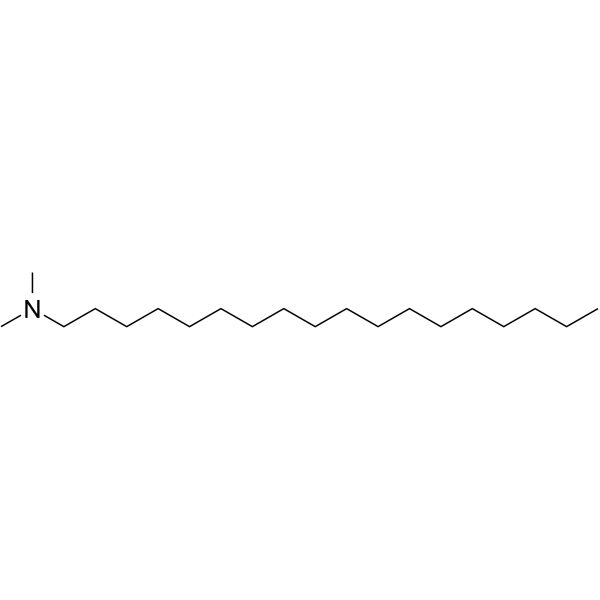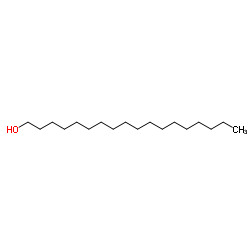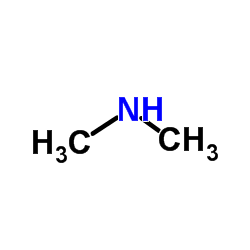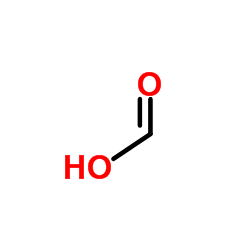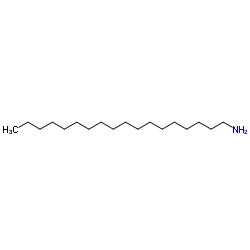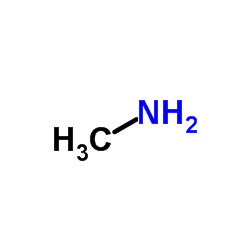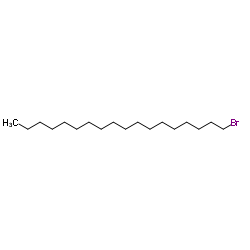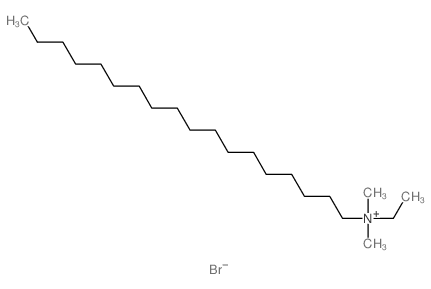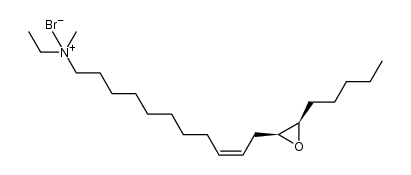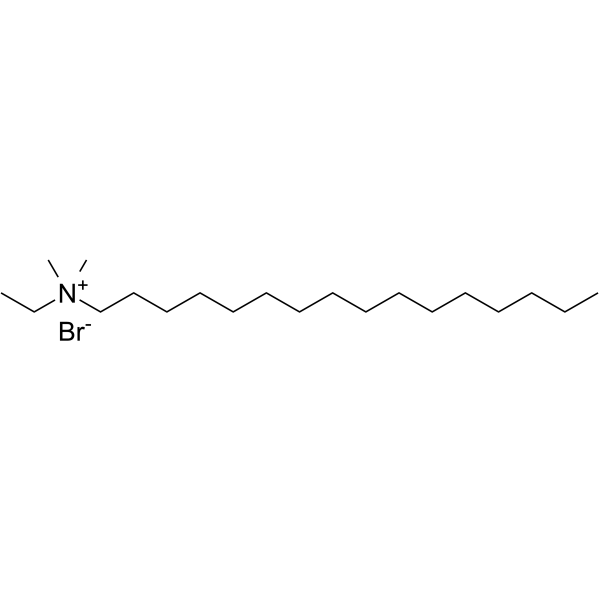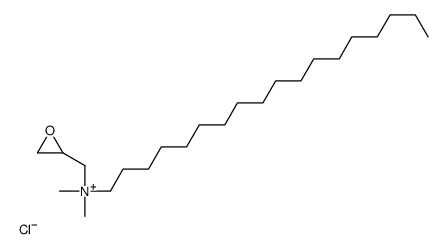124-28-7
| 中文名 | 十八烷基二甲基叔胺 |
|---|---|
| 英文名 | N,N-Dimethyloctadecylamine |
| 中文别名 |
地孟汀
N,N-二甲基十八胺 十八叔胺 N,N-二甲基-1-十八胺 二甲十八胺 N,N-二甲基正十八胺 |
| 英文别名 |
EINECS 204-694-8
GS-1339 Onamine 18 dimethyloctadecylamine Amine 2M18D dimethyl stearyl amine N-octadecyldimethylamine Dimanthine Thelmesan Adma 18 1-Octadecanamine, N,N-dimethyl- Dimantine DMA18 N,N-Dimethyl-n-octadecylamine Adogen 342D N,N-dimethyl-N-stearylamine Dimantin octadecyl dimethyl amine N-stearyl-N,N-dimethylamine N,N-Dimethylstearylamine N,N-Dimethyl-1-octadecanamine MFCD00048496 Dymanthine N,N-dimethyloctadecan-1-amine N-n-Octadecyldimethylamine |
| 描述 | 强力霉素是一种驱虫药。强力霉素有可能研究多种肠道蠕虫感染[1][2]。 |
|---|---|
| 相关类别 | |
| 参考文献 |
| 密度 | 0.8±0.1 g/cm3 |
|---|---|
| 沸点 | 348.5±5.0 °C at 760 mmHg |
| 熔点 | 23 °C |
| 分子式 | C20H43N |
| 分子量 | 297.562 |
| 闪点 | 153.8±5.2 °C |
| 精确质量 | 297.339539 |
| PSA | 3.24000 |
| LogP | 9.10 |
| 外观性状 | 透明液体 |
| 蒸汽压 | 0.0±0.8 mmHg at 25°C |
| 折射率 | 1.450 |
| 储存条件 | 塑料桶装,每桶50kg。贮存于阴凉、通风处。远离火种和热源。 塑料桶装,每桶50kg。长途运输时外用木条箱,桶底衬稻草。 |
| 稳定性 | 1.基本性质:可与环氧乙烷、硫酸二甲酯、硫酸二乙酯、氯甲烷、氯苄等反应,生成不同的季铵盐阳离子。 2.本品低毒。 |
| 水溶解性 | Slightly soluble |
| 分子结构 | 1、 摩尔折射率:98.42 2、 摩尔体积(cm3/mol):365.9 3、 等张比容(90.2K):853.5 4、 表面张力(dyne/cm):29.6 5、 极化率(10-24cm3):39.01 |
| 计算化学 | 1.疏水参数计算参考值(XlogP):无 2.氢键供体数量:0 3.氢键受体数量:1 4.可旋转化学键数量:17 5.互变异构体数量:无 6.拓扑分子极性表面积3.2 7.重原子数量:21 8.表面电荷:0 9.复杂度:177 10.同位素原子数量:0 11.确定原子立构中心数量:0 12.不确定原子立构中心数量:0 13.确定化学键立构中心数量:0 14.不确定化学键立构中心数量:0 15.共价键单元数量:1 |
| 更多 | 1、性状:浅棕色粘稠液体,20℃时为浅草黄软质固体 2、熔点(℃):22.5 3、沸点(℃):202 4、相对密度:0.84 5、溶解性:易溶于醇类溶剂,不溶于水 6、凝固点(℃):22.89 |
Synonym:Dimethylstearamine; Dymanthine Section 2 - COMPOSITION, INFORMATION ON INGREDIENTS
Risk Phrases: 10 34 Section 3 - HAZARDS IDENTIFICATION EMERGENCY OVERVIEW
Flammable. Causes burns.Corrosive. Potential Health Effects Eye: Causes eye burns. May cause chemical conjunctivitis and corneal damage. Skin: Causes skin burns. May cause cyanosis of the extremities. May cause skin rash (in milder cases), and cold and clammy skin with cyanosis or pale color. Ingestion: May cause severe and permanent damage to the digestive tract. May cause gastrointestinal irritation with nausea, vomiting and diarrhea. Causes gastrointestinal tract burns. May cause perforation of the digestive tract. The toxicological properties of this substance have not been fully investigated. Ingestion of large amounts may cause CNS depression. May cause systemic effects. Inhalation: Causes chemical burns to the respiratory tract. The toxicological properties of this substance have not been fully investigated. Aspiration may lead to pulmonary edema. Vapors may cause dizziness or suffocation. May cause systemic effects. May cause burning sensation in the chest. Chronic: Effects may be delayed. Section 4 - FIRST AID MEASURES Eyes: Get medical aid immediately. Do NOT allow victim to rub eyes or keep eyes closed. Extensive irrigation with water is required (at least 30 minutes). Skin: Get medical aid immediately. Immediately flush skin with plenty of water for at least 15 minutes while removing contaminated clothing and shoes. Wash clothing before reuse. Destroy contaminated shoes. Ingestion: Do not induce vomiting. If victim is conscious and alert, give 2-4 cupfuls of milk or water. Get medical aid immediately. Inhalation: Get medical aid immediately. Remove from exposure and move to fresh air immediately. If not breathing, give artificial respiration. If breathing is difficult, give oxygen. Do NOT use mouth-to-mouth resuscitation. If breathing has ceased apply artificial respiration using oxygen and a suitable mechanical device such as a bag and a mask. Notes to Physician: Section 5 - FIRE FIGHTING MEASURES General Information: As in any fire, wear a self-contained breathing apparatus in pressure-demand, MSHA/NIOSH (approved or equivalent), and full protective gear. Vapors may form an explosive mixture with air. Vapors can travel to a source of ignition and flash back. During a fire, irritating and highly toxic gases may be generated by thermal decomposition or combustion. Use water spray to keep fire-exposed containers cool. Water may be ineffective. Material is lighter than water and a fire may be spread by the use of water. Containers may explode in the heat of a fire. Flammable liquid and vapor. Vapors may be heavier than air. They can spread along the ground and collect in low or confined areas. Extinguishing Media: For small fires, use dry chemical, carbon dioxide, water spray or alcohol-resistant foam. For large fires, use water spray, fog, or alcohol-resistant foam. Use water spray to cool fire-exposed containers. Water may be ineffective. Do NOT use straight streams of water. Section 6 - ACCIDENTAL RELEASE MEASURES General Information: Use proper personal protective equipment as indicated in Section 8. Spills/Leaks: Absorb spill with inert material (e.g. vermiculite, sand or earth), then place in suitable container. Avoid runoff into storm sewers and ditches which lead to waterways. Clean up spills immediately, observing precautions in the Protective Equipment section. Remove all sources of ignition. Use a spark-proof tool. Provide ventilation. A vapor suppressing foam may be used to reduce vapors. Section 7 - HANDLING and STORAGE Handling: Remove contaminated clothing and wash before reuse. Use with adequate ventilation. Ground and bond containers when transferring material. Use spark-proof tools and explosion proof equipment. Avoid contact with eyes, skin, and clothing. Empty containers retain product residue, (liquid and/or vapor), and can be dangerous. Keep container tightly closed. Keep away from heat, sparks and flame. Avoid ingestion and inhalation. Discard contaminated shoes. Do not pressurize, cut, weld, braze, solder, drill, grind, or expose empty containers to heat, sparks or open flames. Storage: Keep away from heat, sparks, and flame. Keep away from sources of ignition. Store in a tightly closed container. Store in a cool, dry, well-ventilated area away from incompatible substances. Flammables-area. Section 8 - EXPOSURE CONTROLS, PERSONAL PROTECTION Engineering Controls: Facilities storing or utilizing this material should be equipped with an eyewash facility and a safety shower. Use adequate general or local explosion-proof ventilation to keep airborne levels to acceptable levels. Exposure Limits CAS# 124-28-7: Personal Protective Equipment Eyes: Wear appropriate protective eyeglasses or chemical safety goggles as described by OSHA's eye and face protection regulations in 29 CFR 1910.133 or European Standard EN166. Skin: Wear appropriate protective gloves to prevent skin exposure. Clothing: Wear appropriate protective clothing to prevent skin exposure. Respirators: A respiratory protection program that meets OSHA's 29 CFR 1910.134 and ANSI Z88.2 requirements or European Standard EN 149 must be followed whenever workplace conditions warrant respirator use. Section 9 - PHYSICAL AND CHEMICAL PROPERTIES Physical State: Liquid Color: colorless Odor: amine-like pH: Not available. Vapor Pressure: Not available. Viscosity: Not available. Boiling Point: Not available. Freezing/Melting Point: 23 deg C Autoignition Temperature: Not available. Flash Point: 44 deg C ( 111.20 deg F) Explosion Limits, lower: Not available. Explosion Limits, upper: Not available. Decomposition Temperature: Solubility in water: Specific Gravity/Density: .8000g/cm3 Molecular Formula: C20H43N Molecular Weight: 297.57 Section 10 - STABILITY AND REACTIVITY Chemical Stability: Stable under normal temperatures and pressures. Conditions to Avoid: Incompatible materials, ignition sources, excess heat, strong oxidants. Incompatibilities with Other Materials: Oxidizing agents. Hazardous Decomposition Products: Carbon monoxide, oxides of nitrogen, irritating and toxic fumes and gases, carbon dioxide. Hazardous Polymerization: Has not been reported Section 11 - TOXICOLOGICAL INFORMATION RTECS#: CAS# 124-28-7: RG4200000 LD50/LC50: CAS# 124-28-7: Draize test, rabbit, eye: 20 mg/24H Moderate; Draize test, rabbit, skin: 20 mg/24H Moderate. Carcinogenicity: N,N-Dimethyloctadecylamine - Not listed by ACGIH, IARC, or NTP. Other: See actual entry in RTECS for complete information. Section 12 - ECOLOGICAL INFORMATION Section 13 - DISPOSAL CONSIDERATIONS Dispose of in a manner consistent with federal, state, and local regulations. Section 14 - TRANSPORT INFORMATION IATA Shipping Name: Amines, liquid, corrosive, n.o.s.* Hazard Class: 8 (3) UN Number: 2735 Packing Group: III IMO Shipping Name: Amines, liquid, corrosive, n.o.s. Hazard Class: 8 (3) UN Number: 2735 Packing Group: III RID/ADR Shipping Name: CORROSIVE LIQUID, FLAMMABLE, N.O.S. Hazard Class: 8 UN Number: 2920 Packing group: II Section 15 - REGULATORY INFORMATION European/International Regulations European Labeling in Accordance with EC Directives Hazard Symbols: C Risk Phrases: R 10 Flammable. R 34 Causes burns. Safety Phrases: S 9 Keep container in a well-ventilated place. S 16 Keep away from sources of ignition - No smoking. S 25 Avoid contact with eyes. S 28A After contact with skin, wash immediately with plenty of water. S 33 Take precautionary measures against static discharges. S 36/37/39 Wear suitable protective clothing, gloves and eye/face protection. S 37 Wear suitable gloves. S 45 In case of accident or if you feel unwell, seek medical advice immediately (show the label where possible). WGK (Water Danger/Protection) CAS# 124-28-7: 2 Canada CAS# 124-28-7 is listed on Canada's DSL List. CAS# 124-28-7 is not listed on Canada's Ingredient Disclosure List. US FEDERAL TSCA CAS# 124-28-7 is listed on the TSCA inventory. SECTION 16 - ADDITIONAL INFORMATION N/A |
|
毒理学数据: 皮肤/眼睛刺激性:标准德来塞实验 兔子皮肤接触,20mg/24HREACTION SEVERITY,中等反应; 兔子眼睛接触,20mg/24HREACTION SEVERITY,强烈反应; 急性毒性数据:大鼠腹腔LDLo:100mg/kg;小鼠腹腔LD50:315mg/kg CHEMICAL IDENTIFICATION
HEALTH HAZARD DATAACUTE TOXICITY DATA
|
| 危害码 (欧洲) | C:Corrosive; |
|---|---|
| 风险声明 (欧洲) | R22;R34 |
| 安全声明 (欧洲) | S45-S36/37/39-S26 |
| 危险品运输编码 | 2735 |
| RTECS号 | RG4200000 |
| 包装等级 | III |
| 危险类别 | 8 |
| 海关编码 | 2921199090 |
| 上游产品 10 | |
|---|---|
| 下游产品 7 | |
| 海关编码 | 2921199090 |
|---|---|
| 中文概述 | 2921199090 其他无环单胺及其衍生物及其盐。监管条件:无。增值税率:17.0%。退税率:9.0%。最惠国关税:6.5%。普通关税:30.0% |
| 申报要素 | 品名, 成分含量, 用途 |
| Summary | 2921199090 other acyclic monoamines and their derivatives; salts thereof VAT:17.0% Tax rebate rate:9.0% Supervision conditions:none MFN tariff:6.5% General tariff:30.0% |


